
The Holy Roman Empire, also known as the Holy Roman Empire of the German Nation after 1512, was a polity in Central and Western Europe, usually headed by the Holy Roman Emperor. It developed in the Early Middle Ages and lasted for almost a thousand years until its dissolution in 1806 during the Napoleonic Wars.

Imperial Reform is the name given to repeated attempts in the 15th and 16th centuries to adapt the structure and the constitutional order of the Holy Roman Empire to the requirements of the early modern state and to give it a unified government under either the Imperial Estates or the emperor's supremacy.

Bremen-Verden, formally the Duchies of Bremen and Verden, were two territories and immediate fiefs of the Holy Roman Empire, which emerged and gained imperial immediacy in 1180. By their original constitution they were prince-bishoprics of the Archdiocese of Bremen and Bishopric of Verden.

The Austrian Circle was an Imperial Circle of the Holy Roman Empire. It was one of the four Imperial Circles created by decree after the 1512 Diet at Cologne, twelve years after the original six Circles were established in the course of the Imperial Reform. It roughly corresponds to present-day Austria, Slovenia, and the Trentino-Alto Adige/Südtirol and Venezia Giulia regions of Northern Italy, but also comprised the Further Austrian territories in the former Swabian stem duchy.

The Burgundian Circle was an Imperial Circle of the Holy Roman Empire created in 1512 and significantly enlarged in 1548. In addition to the Free County of Burgundy, the Burgundian Circle roughly covered the Low Countries, i.e., the areas now known as the Netherlands, Belgium and Luxembourg and adjacent parts in the French administrative region of Nord-Pas-de-Calais. For most of its history, its lands were coterminous with the holdings of the Spanish Habsburgs in the Empire.

The Franconian Circle was an Imperial Circle established in 1500 in the centre of the Holy Roman Empire. It comprised the eastern part of the former Franconian stem duchy—roughly corresponding with the present-day Bavarian Regierungsbezirke of Upper, Middle and Lower Franconia—while western Rhenish Franconia belonged to the Upper Rhenish Circle. The title of a "Duke of Franconia" was claimed by the Würzburg bishops.
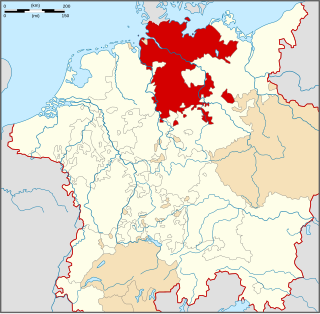
The Lower Saxon Circle was an Imperial Circle of the Holy Roman Empire. It covered much of the territory of the medieval Duchy of Saxony, and was originally called the Saxon Circle before later being better differentiated from the Upper Saxon Circle by the more specific name.

The Upper Saxon Circle was an Imperial Circle of the Holy Roman Empire, created in 1512.
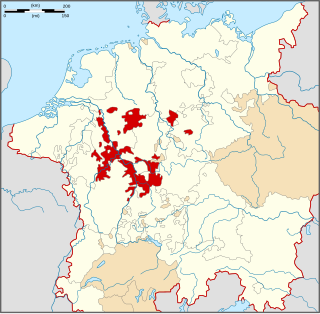
The Electoral Rhenish Circle was an Imperial Circle of the Holy Roman Empire, created in 1512.
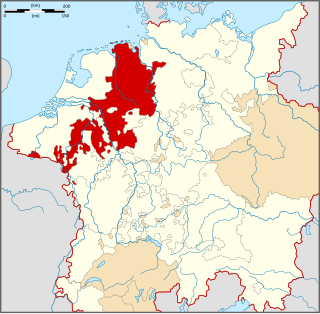
The Lower Rhenish–Westphalian Circle was an Imperial Circle of the Holy Roman Empire. It comprised territories of the former Duchy of Lower Lotharingia, Frisia and the Westphalian part of the former Duchy of Saxony.
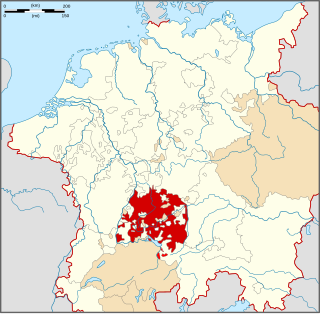
The Circle of Swabia or Swabian Circle was an Imperial Circle of the Holy Roman Empire established in 1500 on the territory of the former German stem-duchy of Swabia. However, it did not include the Habsburg home territories of Swabian Austria, the member states of the Swiss Confederacy nor the lands of the Alsace region west of the Rhine, which belonged to the Upper Rhenish Circle. The Swabian League of 1488, a predecessor organization, disbanded in the course of the Protestant Reformation and the Thirty Years War later in the 16th century.

The Upper Rhenish Circle was an Imperial Circle of the Holy Roman Empire established in 1500 on the territory of the former Duchy of Upper Lorraine and large parts of Rhenish Franconia including the Swabian Alsace region and the Burgundian duchy of Savoy.

Cambrésis is a former pagus, county and prince-bishopric of the medieval Holy Roman Empire that was annexed to the Kingdom of France in 1679. It is now regarded as one of the "natural regions" of France, and roughly equivalent to the Arrondissement of Cambrai in department Nord. The capital of Cambrésis was Cambrai. Originally ruled by a dynasty of counts, Cambrésis became a prince-bishopric in 1007, comparable to the Prince-Bishopric of Liège and the Prince-Bishopric of Utrecht. It encompassed the territory in which the bishop of Cambrai had secular authority.
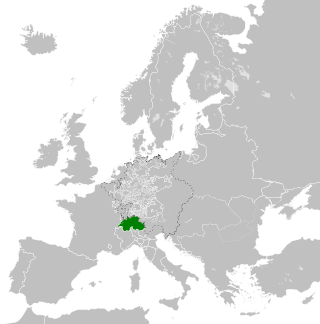
The Old Swiss Confederacy, also known as Switzerland or the Swiss Confederacy, was a loose confederation of independent small states, initially within the Holy Roman Empire. It is the precursor of the modern state of Switzerland.

The Imperial Diet was the deliberative body of the Holy Roman Empire. It was not a legislative body in the contemporary sense; its members envisioned it more like a central forum where it was more important to negotiate than to decide.

The Army of the Holy Roman Empire was created in 1422 and came to an end when the Holy Roman Empire was dissolved in 1806 as a result of the Napoleonic Wars.
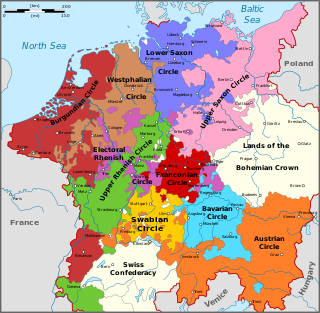
When the Imperial Circles — comprising a regional grouping of territories of the Holy Roman Empire — were created as part of the Imperial Reform at the 1500 Diet of Augsburg, many Imperial territories remained unencircled.
Circle troops were the contingents of soldiers that the Imperial Circles (Reichskreise) actually placed at the disposal of the Army of the Holy Roman Empire or Reichsarmee. Following the Imperial Defence Order (Reichsdefensionalordnung), all imperial circles in the empire were obliged to provide contingents of troops, although not all did so in the event. The Imperial Register (Reichsmatrikel) laid down how many troops the individual Imperial States had to make available to the Reichsarmee.
The Imperial Military Constitution was the collection of military laws of the Holy Roman Empire. Like the rest of the imperial constitution, it grew out of various laws and governed the establishment of military forces within the Empire. It was the basis for the establishment of the Army of the Holy Roman Empire, which was under the supreme command of the Emperor but was distinct from his Imperial Army, as it could only be deployed by the Imperial Diet. The last Imperial Defence Order (Reichsdefensionalordnung), entitled Reichsgutachten in puncto securitatis, of 13/23 May 1681, completed the military constitution of the Holy Roman Empire.
The Burgundian treaty of 1548, also known as the Transaction of Augsburg, settled the status of the Habsburg Netherlands within the Holy Roman Empire.

















